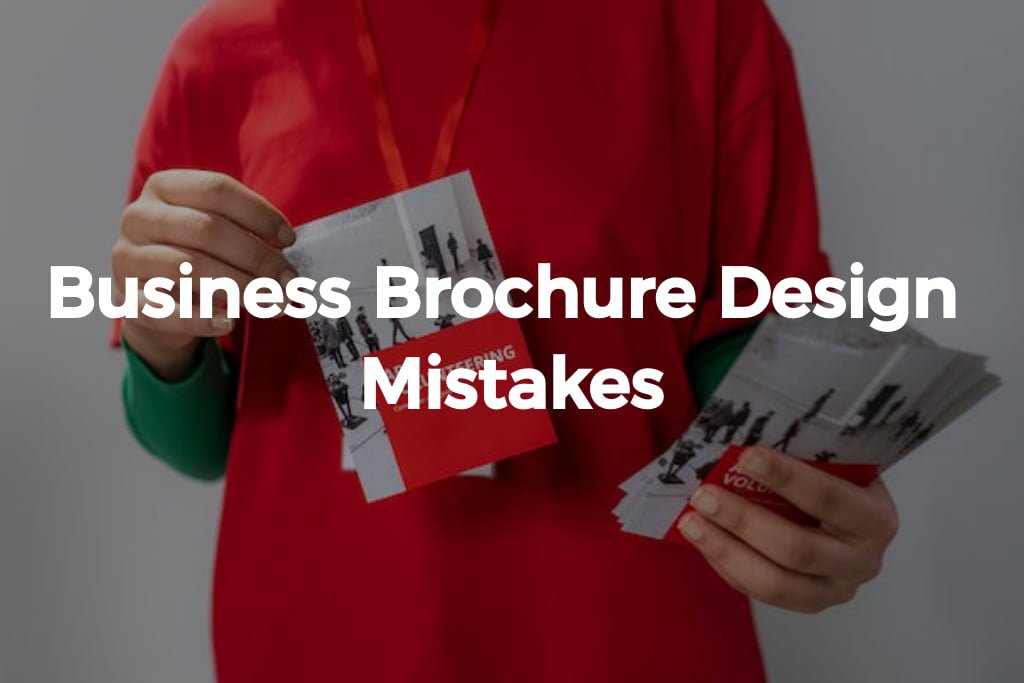In the bustling world of business, a well-designed brochure can be a game-changer. It serves as a visual representation of your brand, conveying crucial information to your audience. However, the road to a successful business brochure is riddled with potential pitfalls. Crafting a design from scratch can be a daunting task, requiring both creative expertise and a significant investment of time. Many entrepreneurs and small businesses find themselves struggling to strike a balance between visual appeal, effective communication, and efficient production. That’s where online brochure templates come in. These ready-to-use templates are professionally designed, carefully crafted, and easily customizable to suit your brand’s unique personality and message in minutes. In this blog, we’ll explore business brochure design mistakes and guide you on how to avoid them for a brochure that captivates and communicates effectively, even for young minds to comprehend.
Business Brochure Design Mistakes
Business brochures are powerful tools for communication, providing a tangible and visually engaging way to share information. However, certain design missteps can hinder their effectiveness. Let’s delve into the mistakes to avoid to ensure your business brochure stands out for all the right reasons.
Ignoring the Target Audience
One of the most common mistakes is overlooking the needs and preferences of your target audience. For primary school students, this translates to a failure to consider age-appropriate visuals and language. Understanding your audience is crucial for crafting a brochure that resonates and engages.
Cluttered Layouts: Less is More
Cluttered layouts overwhelm the reader and dilute the message. In the world of business brochure design, simplicity is key. Avoid the temptation to overcrowd your brochure with excessive text and images. Instead, opt for a clean layout that guides the reader’s focus to key information.
Inconsistent Branding
Consistency is the cornerstone of effective branding. Deviating from your established brand colors, fonts, and logo can confuse your audience. For primary school students, a consistent and recognizable brand identity creates a sense of familiarity and trust.
Poor Font Choices: Readability Matters
The fonts you choose can significantly impact readability. Avoid overly decorative fonts that may be challenging for primary school students to read. Opt for clear, sans-serif fonts for body text, and consider bold, legible options for headings.
Lack of Hierarchy: Organize Information Effectively
A well-organized hierarchy is crucial for guiding readers through your brochure. Important information should stand out through the use of headings, subheadings, and strategically placed visuals. This ensures that even a primary school student can follow the flow of information effortlessly.
Neglecting White Space: Let Your Design Breathe
White space is not wasted space; it’s a crucial design element that enhances readability. A lack of white space can make your brochure feel cramped and overwhelming. For primary school students, well-utilized white space creates a visually appealing and easy-to-digest layout.
Low-Quality Images: A Visual Turnoff
Blurry or pixelated images detract from the overall professionalism of your brochure. High-quality, relevant images are essential for capturing attention and conveying your message effectively. This is especially important when creating brochures for primary school students, where visuals play a vital role in comprehension.
Overlooking Call-to-Action (CTA)
Every brochure should have a clear call to action. Failing to provide a next step for your audience can result in missed opportunities. For primary school students, a simple and visually distinct CTA can encourage engagement, whether it’s visiting a website or participating in an activity.
Ignoring Color Psychology
Colors evoke emotions and influence perceptions. Ignoring the principles of color psychology can lead to a disconnect between your message and your audience. For primary school students, vibrant and appealing colors can enhance engagement and create a positive association with the content.
Relying Too Heavily on Trends
While staying current is important, blindly following design trends can result in a brochure that quickly feels outdated. Strive for a balance between contemporary elements and timeless design principles. This ensures that your brochure remains relevant for the long haul.
Failing to Proofread: Typos and Errors
Typos and grammatical errors can undermine the credibility of your message. Before printing or distributing your brochure, thoroughly proofread the content. For primary school students, a well-edited brochure ensures clarity and aids in effective learning.
Neglecting Print Quality
The transition from digital design to print is a critical step. Neglecting print quality can result in colors that look different on paper or images that appear pixelated. Ensure that your brochure designer allows for high-resolution output to maintain the integrity of your design.
You Might Like:
Common Mistakes to Avoid in Infographic Design and How to Fix Them
Conclusion
In the competitive realm of business, a well-designed brochure can be a potent weapon. By steering clear of common design mistakes, you set the stage for a brochure that not only informs but captivates your audience. Whether communicating with professionals or primary school students, a thoughtful and error-free brochure is your gateway to success. Remember, every element of your design contributes to the overall impact – from the layout and fonts to colors and imagery. So, let your business brochure be a testament to your commitment to excellence in design and communication with the help of a business brochure template in just a few clicks.










